The drum tower (Taiko-ro) of Former Nakagomi Elementary School
Saku City posted a notice on its website that the former Nakagomi School is open to the public free of charge. (The page seems to have been removed since the deadline has passed.)
The former school will open its doors to the public for free on Saturday, September 26, which is the anniversary of the school’s opening. I don’t really care whether it is free or not, but I heard that we could also visit the drum tower on that day.
Two years ago, I wrote about the former Nakagomi Elementary School in my blog, but the drum tower was not open to the public at that time, so if I could see it, I had to go there.
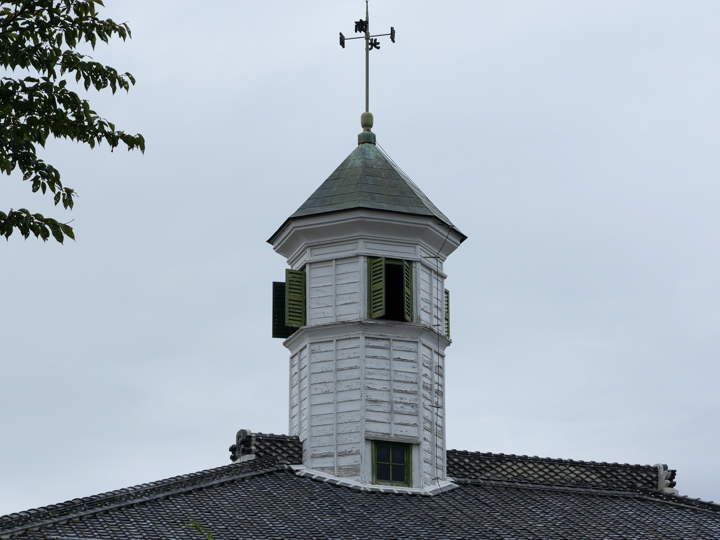
I should be able to climb up this tower.
Actually, the former Nakagomi School was damaged by a typhoon last year and is currently under restoration.
According to a pdf on the official website of Saku City (already deleated), some of the plaster on the walls has collapsed and there are also many cracks.
After signing in at the reception desk for covid protection, I looked at the school building and found that the walls were covered with sheets.
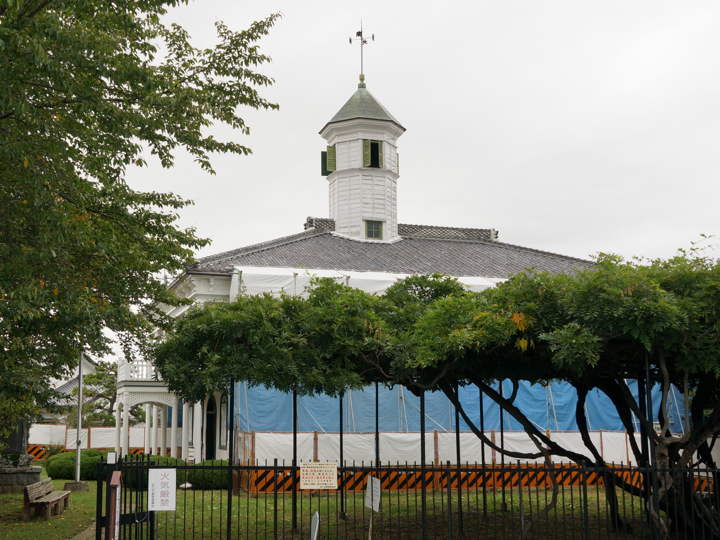
I guessed it was to repaint the plaster on the walls, but the windows on the entrance side wall were also covered with plastic.
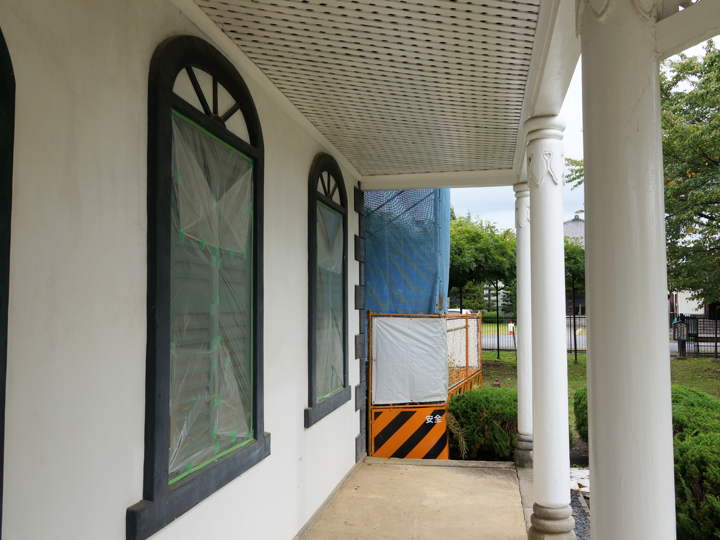
When I went inside, I found something different from what I remembered. The back wall is covered with plywood.
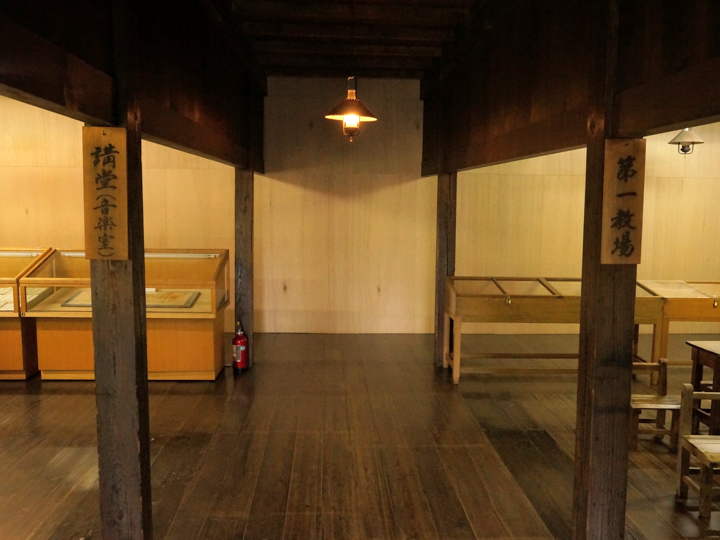
This is how it looked when I visited before. There was another door at the end of the hallway with colored glass.
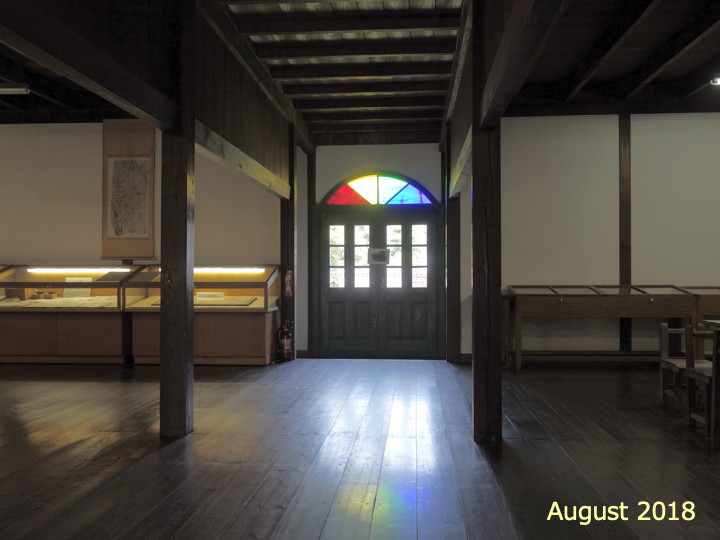
I think it is for the repair of the exterior wall, but it seems they built a wall in front of the back door. I tried to add the position of the plywood wall in the previous photo, but it may not be accurate.
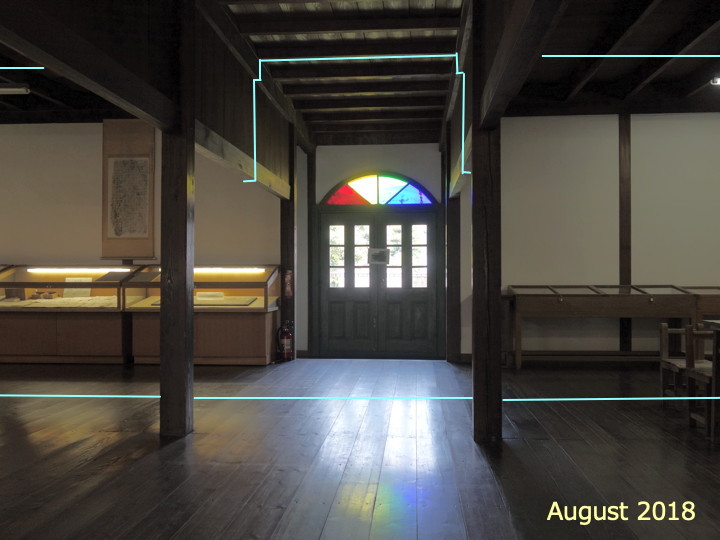
In this photo, the exterior wall on the right had collapsed, which means that the back right room on the second floor was also closed.
Now, this is where I enter for the first time. This is the drum tower, the purpose of my visit.
There is a narrow staircase to go up.
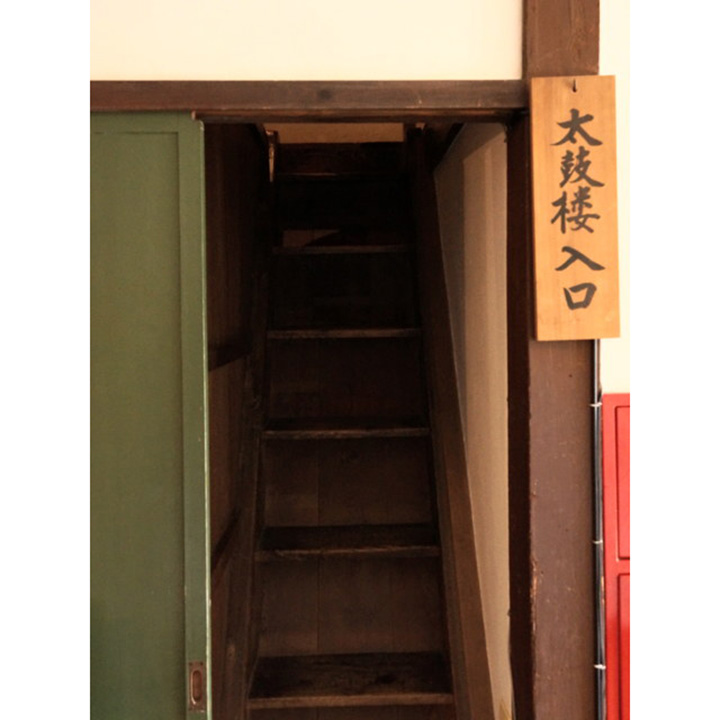
At first I went up the stairs in a straight line, but from there it was a spiral staircase. I apologize for not being able to take a good picture of the whole area because of its narrowness.
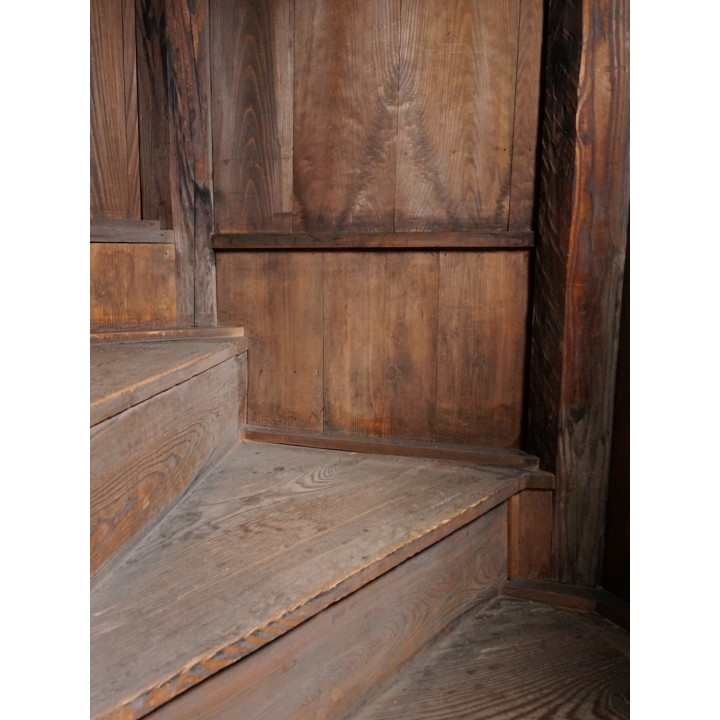
At the top of the stairs, there was a small octagonal room with windows on all four sides. On the day of the visit, a member of the preservation society (I think) was waiting up there to take care of safety. It was raining, so he said he was closing the window on the side that let the rain in.
I should have moved my camera back as far as possible, but I took a normal shot from where I was looking and ended up with this picture. It is hard to tell what it is.
It is a pity that I am not good enough to take pictures.
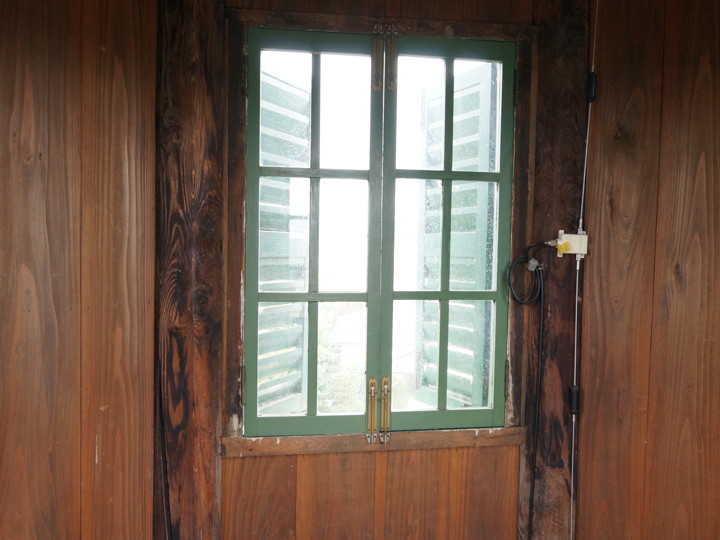
Since there were other visitors, I could not take pictures of people without permission, so I decided to take pictures of the ceiling.
Since the building is called “Taiko-ro" (means drum tower) there is a drum hanging from the ceiling. On the ceiling, names of places in Japan and abroad were written according to the direction.
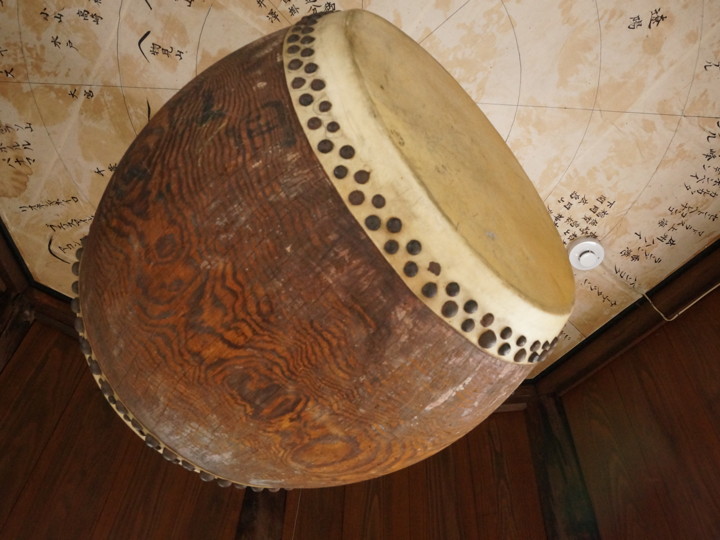
The names are too small to read in this photo, but from the position of the white fire alarm, there are names of places in Cape Town, Bangkok, Hong Kong, Rangoon (Yangon), Hanoi, Guangzhou, Shanghai, Madras, Congo, St. Helena… and so on. Inside the circle are domestic place names.
I also photographed the part where the drum is hanging.
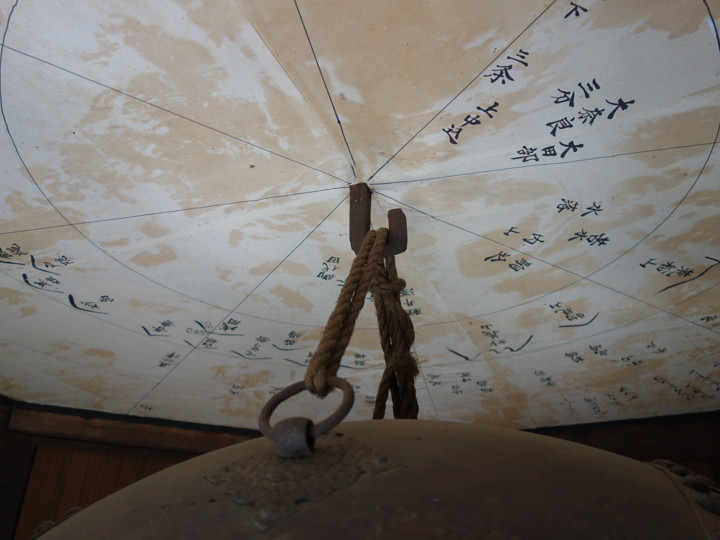
And took photos the outside scenery through the open windows.
By the way, I reconfirmed that I don’t like heights. I was told that the tower had been reinforced against earthquakes, so we could stay there, but I still felt uncomfortable.
Let’s go down now.
There was a square hole in the floor and a spiral staircase leading down. It felt narrow when I went up, but it felt even narrower when I looked at it from above. I carefully descended.
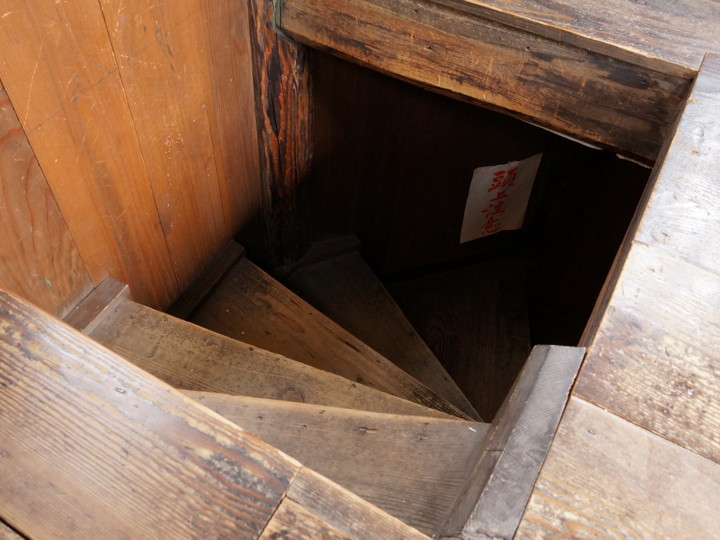
From the second floor, I took this photo of the balcony railing above the entrance. The balcony also looked quite damaged.
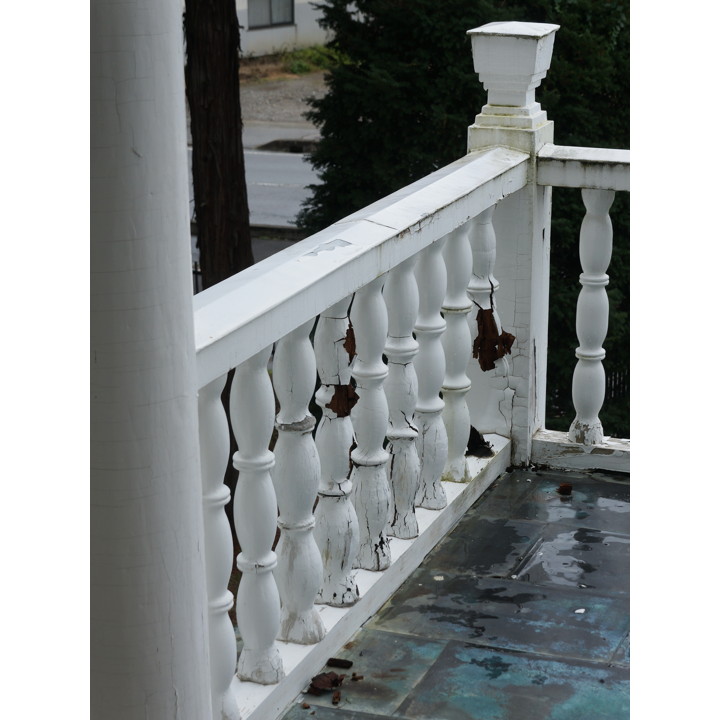
It will probably be repaired in the near future.
After leaving the building, I also checked the wall on the opposite side of the reception desk, but it too was covered by sheets and could not be seen. The rain had almost stopped.
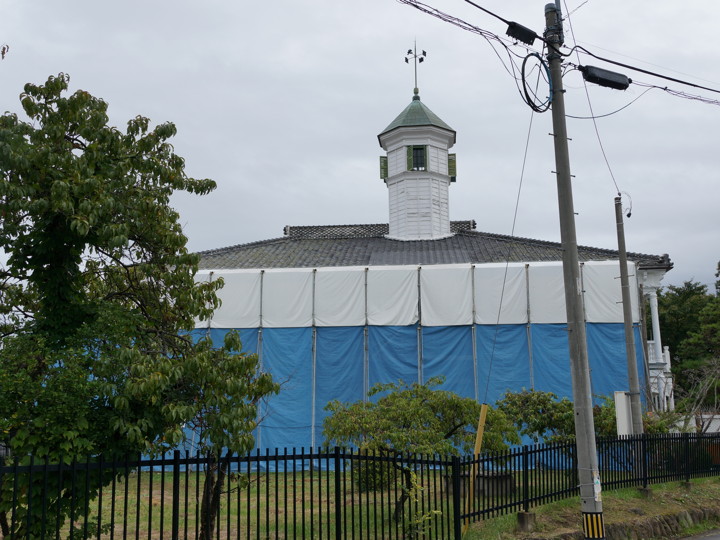
The restoration period of the former Nakagomi School is scheduled from April 24, 2020 to January 29, 2021.
During the restoration, the museum will remain open until Monday, December 28. Since it is during the restration, the admission fee is reduced to 130 yen for adults, 70 yen for high school and university students, and 60 yen for elementary and junior high school students. I feel that it is too polite. (Normally, admission is 260 yen for adults, 150 yen for high school and college students, and 120 yen for elementary and junior high school students.)
[Reference]
Leaflet on the official website of Saku City, “Important Cultural Property: Preservation and Repair of the Former Nakagome School Building (Disaster Restoration)" (link no longer available)
[Related article]
“A visit to Former Nakagomi School" (2018.08.19)
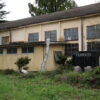
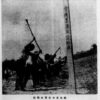
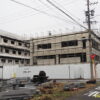
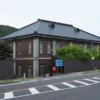
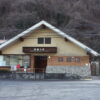
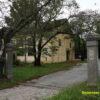
Recent Comments